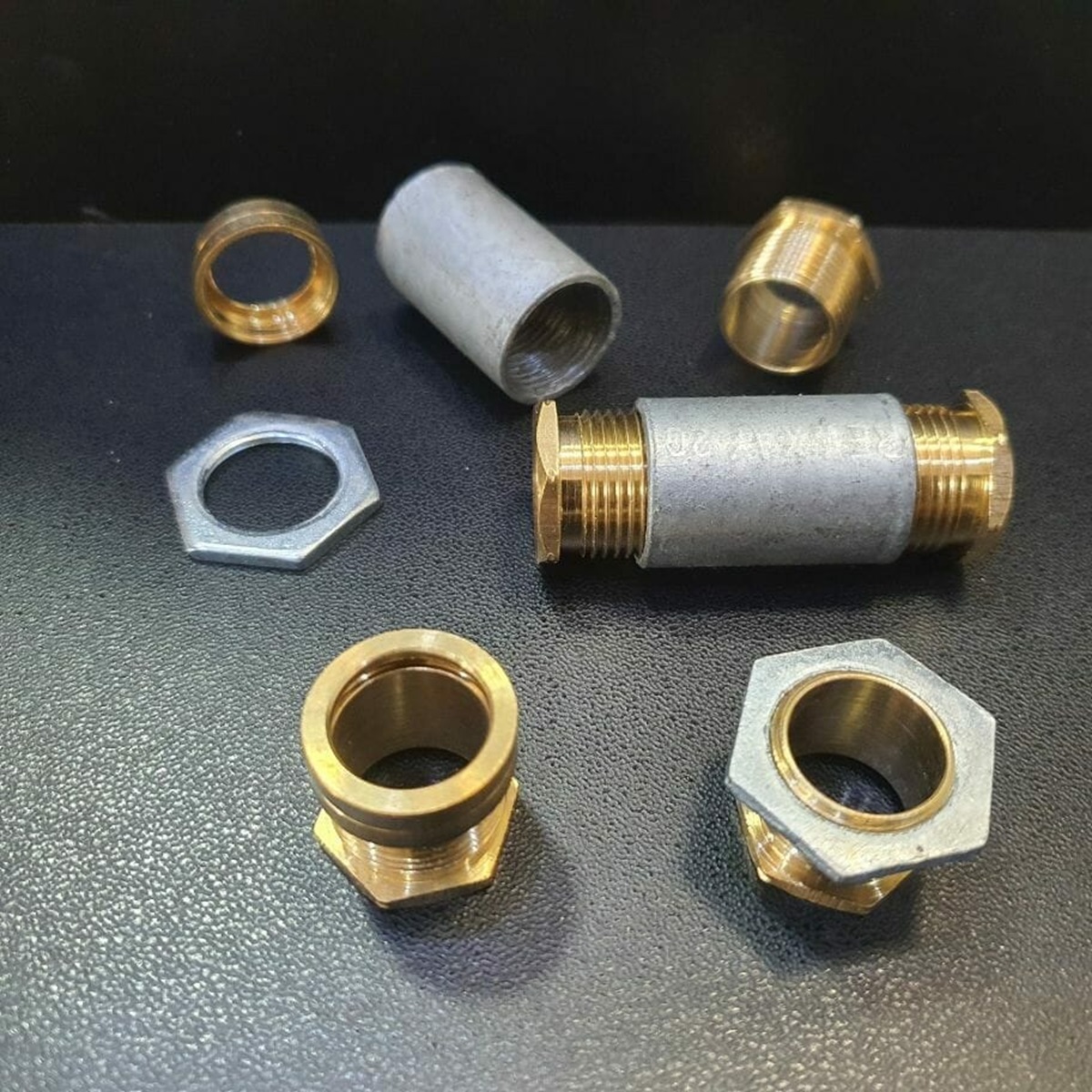Brass fittings are an integral component in various plumbing and industrial applications, valued for their durability, resistance to corrosion, and excellent machinability. However, the wide variety of brass fittings available can make selecting the right type for a specific application a bit challenging. This article explores the different types of brass bush fittings, their unique characteristics, and common uses, helping you make an informed decision for your next project.
Types of Brass Fittings

Compression Fittings
Compression fittings are widely used in plumbing systems to join two pipes or a pipe to a fixture without the need for soldering. These fittings consist of a compression nut, compression ring (ferrule), and a compression seat. When the nut is tightened, it compresses the ferrule against the pipe, creating a watertight seal.
Common Uses:
- Water supply lines for faucets and toilets
- Applications where easy disconnection and reconnection are necessary
- Gas lines, when appropriately rated
Advantages:
- Easy to install and remove
- Reliable, leak-free connections
- Suitable for both soft and hard tubing
Flare Fittings
Flare fittings provide a secure connection by using a flared end of a pipe or tubing. The flared end is created using a special tool that shapes the end of the pipe into a cone. The fitting’s conical shape matches the flared end, and when tightened, it forms a strong seal.
Common Uses:
- High-pressure gas lines
- Refrigeration systems
- Fuel lines in automotive applications
Advantages:
- Can withstand high pressures
- Excellent for gas and fuel applications
- Durable and reusable connections
Threaded Fittings
Threaded fittings, also known as screw fittings, use threads to join pipes and fixtures. They come in various types, such as NPT (National Pipe Thread), BSP (British Standard Pipe), and metric threads, to match different standards and applications.
Common Uses:
- Industrial fluid transfer systems
- HVAC systems
- General plumbing
Advantages:
- Strong and reliable connections
- Easy to install with common tools
- Suitable for high-pressure applications
Push-to-Connect (Push Fit) Fittings
Push-to-connect fittings simplify the process of joining pipes by allowing the user to simply push the pipe into the fitting. These fittings use internal O-rings and stainless steel teeth to create a secure and leak-free connection without the need for tools.
Common Uses:
- Domestic water supply systems
- Compressed air systems
- Hydronic heating systems
Advantages:
- Quick and easy installation
- No special tools required
- Compatible with various pipe materials (copper, PEX, CPVC)
Barbed Fittings
Barbed fittings are designed for use with flexible tubing. They have barbed ends that grip the inside of the tubing when inserted, often secured with a clamp to ensure a tight seal.
Common Uses:
- Low-pressure fluid transfer
- Irrigation systems
- Laboratory equipment
Advantages:
- Simple and cost-effective
- Easy to install and remove
- Ideal for flexible tubing
Compression Ring (Olive) Fittings

Similar to standard compression fittings, compression ring fittings use a ring or “olive” to create a seal. These are typically used in European plumbing systems and work by compressing the ring onto the pipe as the nut is tightened.
Common Uses:
- European plumbing systems
- Water and gas applications
Advantages:
- Strong, leak-free connections
- Easy to install and adjust
- Suitable for various pipe materials
Solder (Sweat) Fittings
Solder fittings, also known as sweat fittings, require soldering to join pipes. This process involves heating the fitting and pipe, then applying solder to create a strong, leak-free joint.
Common Uses:
- Copper piping in plumbing systems
- HVAC systems
- Refrigeration lines
Advantages:
- Permanent, strong joints
- Excellent for high-pressure applications
- Suitable for both water and gas lines
Crimp Fittings
Crimp fittings are used with PEX tubing and require a crimping tool to secure a metal ring around the tubing, creating a watertight seal. These fittings are commonly used in modern plumbing systems for their ease of use and reliability.
Common Uses:
- PEX plumbing systems
- Hydronic heating systems
Advantages:
- Quick and reliable connections
- Easy to install with the right tools
- Durable and leak-proof
Material Considerations
Brass fittings are favored for their unique material properties. Brass, an alloy of copper and zinc, is resistant to corrosion and provides excellent mechanical strength. This makes brass fittings ideal for use in environments where water, air, gas, or other corrosive substances are present. Additionally, brass is more resistant to mineral build-up compared to other materials like steel, ensuring longevity in plumbing systems.
Choosing the Right Brass Fitting

When selecting brass fittings for your project, consider the following factors:
Application Requirements:
- Determine the type of fluid or gas being transported.
- Consider the pressure and temperature conditions.
- Evaluate the need for disassembly and reassembly.
Compatibility:
- Ensure compatibility with the pipe or tubing material.
- Match the fitting type to the specific plumbing standards (e.g., NPT, BSP).
Ease of Installation:
- Choose fittings that align with your skill level and available tools.
- Consider the installation environment and accessibility.
Durability and Maintenance:
- Assess the long-term maintenance needs.
- Opt for fittings that offer reliable, leak-free performance over time.
Conclusion
Brass fittings offer a versatile and durable solution for a wide range of plumbing and industrial applications. From compression and flare fittings to push-to-connect and crimp fittings, each type has unique characteristics that make it suitable for specific uses. By understanding the different types of brass fittings and their advantages, you can make an informed decision that ensures the success and longevity of your project. Whether you’re working on a residential plumbing system, an industrial fluid transfer system, or a high-pressure gas line, there’s a brass fitting designed to meet your needs with reliability and efficiency.
